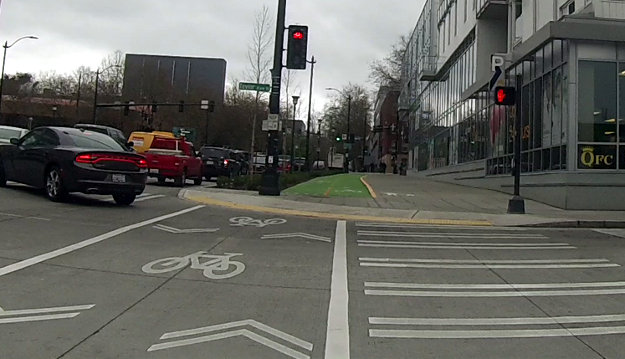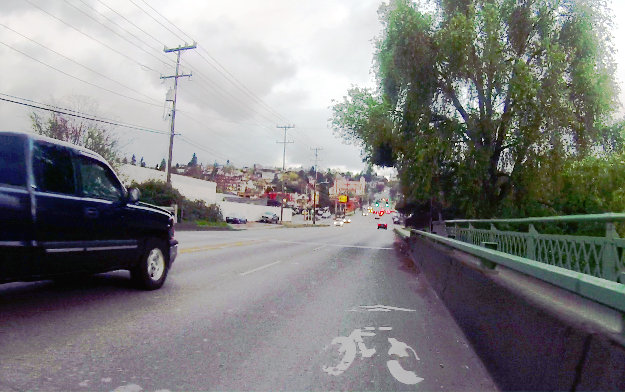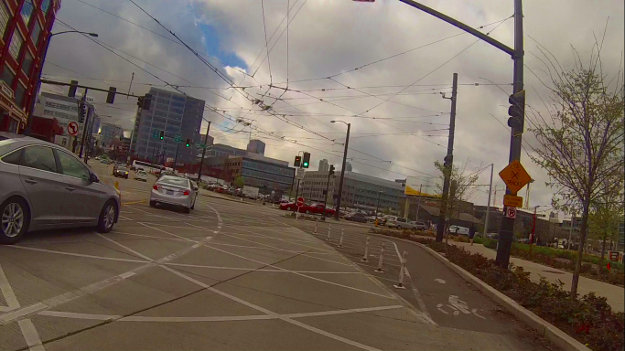If there aren’t roads like this.

Why are there bikeways like this?

It is no secret that urban infrastructure takes generations to be implemented city wide. Thus, if you want to correct a big mistake now the changes won’t be happening any time soon. That is why everywhere in the US you see lots of sharrows and only a few segregated bikeways.
If you pay attention you’ll notice that in the previous decades driving was THE mean of transportation. That’s why you see highways going through downtown and dividing cities, streets without sidewalks, and a shamefully low number of segregated bikeways that provide for an equally low percentage of bikers.
But going back to the 50s, 60s and 70s, when politicians and people only cared about cars, some urban designers tried hard to provide even a minimum cycling infrastructure. I can imagine how hard urban designers had to fight in order to get sharrows approved when everybody was crazy about oil and cars.
That’s why I really despise new sharrows being installed instead of segregated bikeways, but I’d like to praise the few great designers who envisioned a multimodal world half a century ago.

The Bike Shredder is how i call this piece of urban design I use most days. Well, I shall say I don’t use it any day. Actually, most bicyclist just don’t. I tried it once and it is just scary because it offers a false sense of security, while exposing you to drivers with a very narrow field of view.
As you can see, the bike way detaches from the road where bicycles and cars are about to turn right. I’m sure most drivers who don’t use this intersection frequently think that a bicycle is turning right as the bike way detaches, but then, we actually turn left and join the road again on the traffic light, where most cars turn right. Also, notice there is neither protection nor paint by the traffic light.
It’s a crying shame that such a dangerous design was installed. but hey, I think it can be very easily fixed!. Here are my five cents: All we need to do is extend the bike way until it joins the sidewalk and merge both bikeways past the crosswalk but installing signals so bikers give priority to pedestrians. So simple, yet so easy to make secure!.

There is almost a unique way of biking as bikers are. Each person has its own riding style. Some people prefer doing it slowly while enjoying the travel. Others are in favor of speed and adrenaline, and do not hesitate in counting how many time they spend on the streets without paying any attention in what surrounds them. This points is the main source in distinguishing cyclists in broad strokes.
We have sport cycling as a valid exercise which can be done within a city or a village. These cyclists are dressed in highly colored, fashion maillots, commonly in accordance with the official strip of a particular cyclist team. They also wear helmet even in places where it is not compulsory and ride so fast that can overtake cars. In front of this view, we see the urban bikers.
There is a myriad of them who are characterized by riding not so fast and most of the time in a friendly way. They use the bike to go to work, carry children to school, go out with friends, etc. Similarly as pedestrians, the garment they wear is variate. It does not matter whether you wear jeans, smart dresses, scarfs, tracksuits, you name it. Usually the bikes are not so expensive as in the case of sport cyclists and the bikes they use can be more than 30, 40 or 50 years old. The natural place of sport cyclists are the streets whereas urban cyclists prefer bike lines or also streets. I will talk more about this point in the future.